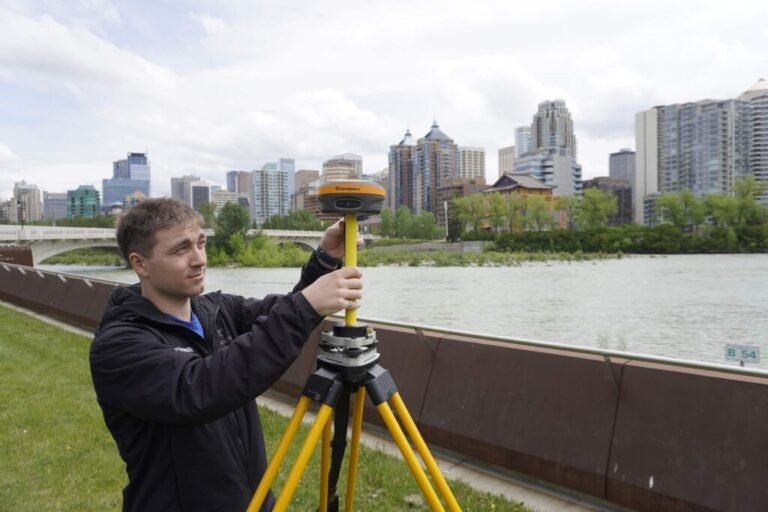In a world where the convenience of navigation and precise location tracking has become a fundamental part of daily life, Global Positioning System (GPS) and Global Navigation Satellite Systems (GNSS) are the invisible backbones of modern technology. From guiding us on unfamiliar roads to enabling scientists to monitor climate change, these systems do more than point us in the right direction. Let’s dive into the intricacies of how these technologies work and their impact on our lives.
Table of Contents
The Essence of GPS and GNSS
Understanding GPS
At its core, GPS is a satellite-based navigation system owned by the United States government and operated by the United States Space Force. It provides geolocation and time information to a GPS receiver anywhere on or near the Earth with an unobstructed line of sight to four or more GPS satellites. The system is critical in various applications, including navigation, mapping, and timing.
The Global Reach of GNSS
GNSS is a broader term encompassing a group of satellite navigation systems, with GPS being one of its constituents. Other systems under the GNSS umbrella include Russia’s GLONASS, the European Union’s Galileo, and China’s BeiDou. Each system works similarly but operates independently, providing global coverage with varying accuracy and reliability.
How These Systems Work
The Satellite Symphony
The operation of GPS and GNSS can be likened to a symphony of satellites orbiting the Earth. These satellites transmit signals picked up by receivers on the ground, including those in smartphones, cars, and specialised GPS survey equipment. The receiver calculates its position by precisely timing the signals multiple satellites send.
Triangulation: The Heart of Navigation
The principle of triangulation is at the heart of GPS and GNSS. By determining the distance from at least four satellites, a receiver can calculate its exact position in three dimensions: latitude, longitude, and altitude. This calculation involves solving mathematical equations that factor in the speed of light, satellite locations, and time synchronisation.
The Role of Ground Control
Keeping Satellites in Check
Ground control stations play a pivotal role in maintaining the accuracy and reliability of GPS and GNSS. These stations monitor the satellites, manage their orbits, and ensure the integrity of the transmitted signals. The system’s precision would degrade without these ground controls, leading to less reliable location data.
The Importance of Time Synchronization
One of the marvels of GPS and GNSS technology is its ability to provide precise time synchronisation. The satellites contain atomic clocks that maintain time with incredible accuracy. This feature is crucial for positioning various global financial systems, power grids, and communication networks that rely on precise timing.
The Impact of GPS and GNSS on Modern Life
Navigation and Beyond
While most of us are familiar with using GPS for navigation, its applications extend far beyond helping us find our way. GPS and GNSS data are integral to a wide range of industries, including agriculture, which supports precision farming, and aviation, which ensures safe and efficient flight paths.
The Advent of GPS Survey Equipment
GPS survey equipment has revolutionised how measurements are taken and analysed in geosciences, construction, and land surveying. This equipment allows for highly accurate mapping and data collection, essential for urban planning, environmental monitoring, and infrastructure development. The precision and efficiency offered by GPS survey equipment have significantly improved the quality and reliability of survey data.
Enhancing Safety and Security
GPS and GNSS systems also play a critical role in enhancing safety and security worldwide. They are used in search and rescue operations to locate individuals in distress quickly. Additionally, these systems support disaster response efforts by providing accurate and timely information for evacuation planning and relief distribution.
Challenges and the Future
Navigating Challenges
Despite their advanced technology, GPS and GNSS systems are not without challenges. Signal interference from natural phenomena or artificial sources can affect accuracy. Additionally, the increasing demand for more precise and reliable location data drives the need for continuous innovation and system upgrades.
The Horizon of Innovation
The future of GPS and GNSS is geared towards overcoming these challenges through technological advancements. New satellites with enhanced capabilities are being launched, and efforts are underway to improve signal processing and reduce vulnerabilities. Moreover, integrating GPS and GNSS data with emerging technologies like autonomous vehicles and the Internet of Things (IoT) opens new avenues for innovation.
In conclusion, GPS and GNSS systems are much more than tools for navigation. They are complex technological marvels that impact various aspects of modern life. From enabling precise surveying to improving safety and security, these systems have become indispensable. As we continue to push the boundaries of what’s possible, the evolution of GPS and GNSS promises to bring even more remarkable changes to our world.

